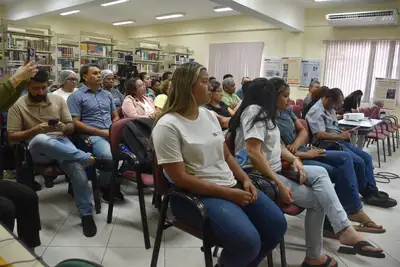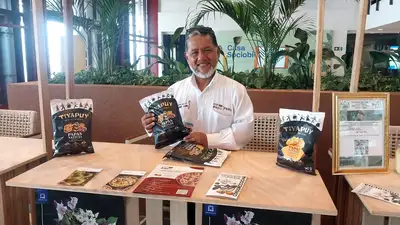Prosthesis ensures quality of life for newborns with cleft lip and palate
The plate temporarily closes the cleft in the roof of the mouth, allowing children to feed and gain weight until the corrective surgery.
Since the first indication of the palatal obturator plate for a child hospitalized in the Neonatology Sector of the Santa Casa de Misericórdia do Pará Foundation (FSCMPA) in 2024, at least 13 newborns treated in the institution's neonatal units have already used the piece, a small prosthesis molded by the dentist from the Cleft Service, which temporarily closes the cleft in the roof of the mouth of children born with a palatal cleft until they can undergo corrective surgery.
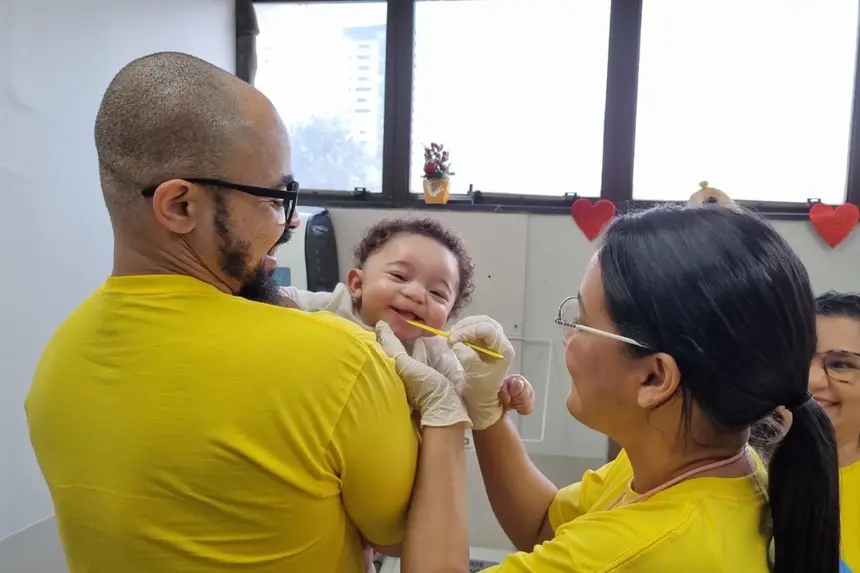
“To make the mold, we use a specific material that is easy to handle and does not run into the baby's mouth. Then, we make a plaster model of this mold. We send this model to the prosthetist, who makes the plate from acrylic resin. These plates are adapted to the baby's mouth with a special glue, the same type used for dentures. Generally, they need this glue because the plate can fall off and move around in the mouth. It is safer to make the adaptation with the glue. And since the baby is growing, it should be replaced approximately every 30 days, so we do not hinder the growth of the baby's mouth,” details dentist Edilsa Sacramento from the Reference Service for Clefts and Craniofacial Anomalies at Santa Casa.
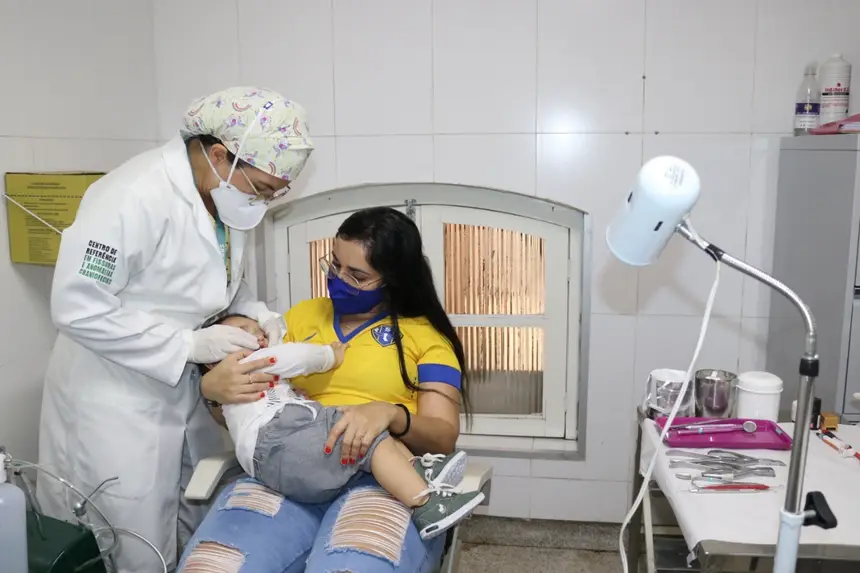
Initial success - The first indication of the device for a baby hospitalized in the neonatal unit at Santa Casa was made by speech therapist Mônica Carvalho. Due to the malformation, the newborn was being fed through a tube but needed to be able to safely ingest food orally to go home. Following the success of the first indication, other children were able to benefit.
“The indication became a criterion for both hospitalized patients and neonates and infants from the Outpatient Clinic who present difficulties in the oral feeding process, such as long ingestion times, difficulty gaining weight, and not accepting the total volume of prescribed milk. When it comes to feeding difficulties, the neonatal period is the most appropriate for using the palatal obturator plate, and our patients have used it until the surgery for the correction of the lips and palate,” explains the speech therapist.
With the follow-up of the children using the plate, it was found that the device favored the entire feeding process of the children, from the amounts ingested, which increased, to the speed of ingestion, improving the development of the babies safely and efficiently, and avoiding hospitalizations for very prolonged periods, and in some situations where surgical interventions were necessary, such as the placement of a device through surgery for the child to be fed through a tube.
“In the first case treated, the last probable option would be for the baby to be discharged from the hospital without feeding orally, but rather with a feeding tube fixed to the abdomen, called gastrostomy, which is not the physiological way for a person to receive food. This procedure is avoided with the use of the device, providing more peace of mind to the parents,” emphasizes the speech therapist.
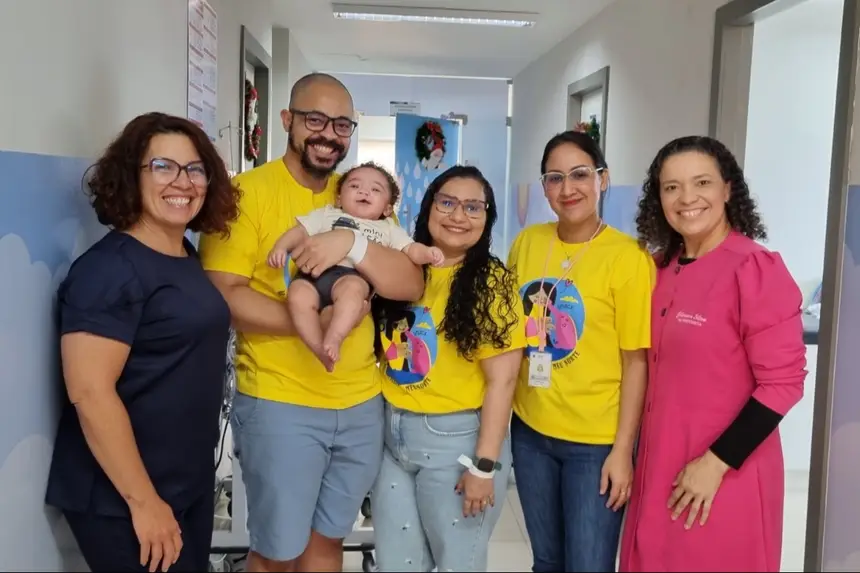
Guidance - The peace of mind that the parents of little Theo were able to experience after 13 days with their son hospitalized in a private maternity hospital, using a tube to feed. Shortly after being discharged from the maternity hospital, he began to be followed by the reference service at Santa Casa, where the family was guided on the care of the child, indicating the use of the plate, says Theo's mother, Elisabeth Quaresma Rosa.
“At the first consultation, the speech therapist already indicated the use of the plate. We had a consultation with the dentist, who provided the first plate, at one month and one week. He started using the plate before he was two months old. Before using the plate, he was ingesting a volume of 50 ml in almost an hour. Then he adapted with the plate, and we reached the period of doing it in 20 minutes. And this made a big difference because he increased his milk consumption volume and was growing. Today, he is already over 6 kilos. We have understood that Theo has a very good evolution,” adds the mother. Besides the gains for her son, she emphasizes that the care at Santa Casa brought more confidence to the family, which benefits from a faster, more efficient, and safer process.
“When we started the care at Santa Casa, it was a huge leap because we came to a specialized team, where the reception is better, the clarification is better, and we can have security in this conduct,” she states.
The speech therapist Mônica Carvalho lists the benefits of using the plate. “The device partially isolates the nasal cavity from the oral cavity, which favors intraoral pressure and consequently facilitates the extraction of milk from the utensil used for feeding; it decreases the time of food ingestion, generating a more adequate weight gain, and also contributes to a better positioning of the structures of the oral cavity that are clefted. For the team, the benefits are aimed at a more efficient and faster process, ensuring adequate feeding and nutrition for the newborns indicated for use, and this impacts a better preparation of this child for future surgeries,” concludes the specialist.



